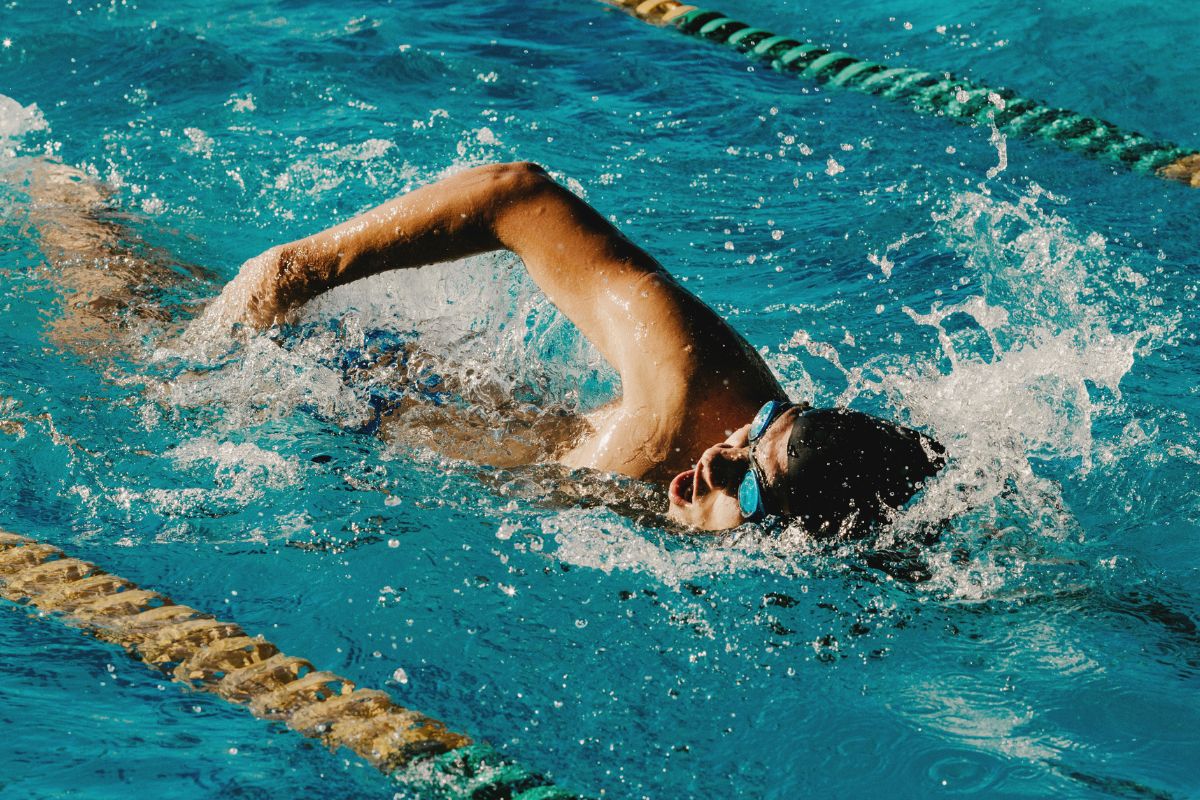
In the contest for the most “Paleo” exercise, swimming would at least make a very strong showing (although it might ultimately lose out to walking). It’s been around for so long that we actually have cave paintings of people swimming, and it’s been recorded as a human activity for as long as we’ve had written records. We’re hardwired to deal with water immersion: don’t try this at home, but if you put a baby underwater, the baby will reflexively hold its breath, and a physiological reaction called the mammalian diving reflex will reduce blood flow and heart rate to preserve oxygen.
From a more scientific standpoint, swimming is a form of very gentle exercise, and Paleo is big on the concept of low-impact movement – you absolutely don’t have to do anything extreme to see health benefits. Even walking is great for improving carb tolerance and insulin sensitivity, reducing inflammation, and raising mood.
Swimming is another kind of exercise that can be as gentle or as intense as you want it to be, and it’s a great addition to almost any workout routine. Unlike walking or running, there’s no repetitive pounding, and the water provides a kind of cushion that limits sharp motions that could cause injury. That makes it perfect for…
- The elderly. There’s a reason why aqua aerobics are so popular with the retirement crowd.
- People with severe obesity that makes other forms of exercise painful.
- Anyone with joint or musculoskeletal pain, regardless of their weight or age.
- Athletes recovering from an injury, or trying to get in some conditioning without aggravating something “tweaky”
- Pregnant women
Becoming a strong swimmer is also a good safety precaution for anyone who may, at some point, encounter a lake, river, ocean, swimming pool, uncovered tank of water, full bathtub, or flooded ditch. Unless you live in the Gobi Desert, this is most likely you.
So what can swimming do for you?
Health Benefits of Swimming
Cardiovascular Benefits
Swimming is primarily an aerobic exercise – it’s cardio. Unsurprisingly, it basically has the same benefits of most other types of cardio:
This review of the cardiovascular effects of swimming concluded that it was beneficial for:
- Lowering blood pressure in people with hypertension
- Improving blood lipids (raising HDL cholesterol and reducing LDL)
- Improving insulin sensitivity
The review noted that studies on whether swimming causes weight loss are mixed, which is exactly what you’d expect from studies that only looked at exercise without dietary changes. You can’t out-exercise a lousy diet. Exercise can be a great adjunct to a good diet, but studies that have subjects exercise without eating better will always show very unimpressive weight-loss results, because that’s just not how exercise works.
Other Benefits

Swimming may also be good for bone health. Unlike weight training, it doesn’t increase bone mass or bone mineral density, but according to this review, it does increase the rate of bone turnover, which can make the bones structurally stronger even though they aren’t any bigger.
Depending on the temperature, swimming can be an excellent form of cold exposure, which may have some health benefits in and of itself – just don’t let the hunger-stimulating effect of the cold water drive you straight to the junk food!
If you do it outside, you’ll also get the benefit of some Vitamin D and just the general stress relief of spending some time outdoors in the sunshine. Pack up some deviled eggs and make it a day at the beach!
Exercise and Performance Benefits (For Everyone!)
Swimming also has benefits for physical performance – and not just for people who have mobility limitations. Because it’s so great for people with joint and mobility problems, it can be pigeonholed as “something you do when you’re too sick, old, or injured to do anything else.” But actually, it also has benefits even for totally healthy athletes with no significant physical issues.
Management of Muscle and Joint Pain
First of all, several studies show that swimming is helpful for rehabilitation and symptom reduction in people with chronic muscle and joint pain. It’s not just an exercise you can do in spite of the pain; it’s an exercise that actually helps reduce the pain.
For example, swimming may be a helpful exercise for reducing pain and stiffness, and increasing physical function, in people with osteoarthritis. This is one reason why it’s so popular with the aging crowd, but it could also be very helpful for people with obesity-related joint pain, who need to work on their pain before they can take up any more serious exercise program.
This meta-analysis concluded in general terms that “aquatic exercise has moderate beneficial effects on pain, physical function, and quality of life in adults with musculoskeletal conditions. These benefits appear comparable across conditions and with those achieved with land-based exercise.”
Active Recovery from More Intense Activities
So swimming is good for people with chronic joint pain. But even for the tough-as-nails athlete crowd, swimming can also be beneficial as a form of active recovery with a very low risk of accumulating any injuries that might compromise your other training. “Active Recovery” is exactly what it sounds like: instead of just lying on the couch to let your muscles recover from a workout (passive recovery), you’re getting up and doing stuff (stretching, foam rolling, yoga…) to actively help them recover.
This study demonstrated the benefits of swimming as a form of active recovery: after a swim recovery session, subjects had less inflammation and were able to run for longer without getting tired, compared to subjects who were randomized to a passive recovery. Not too bad for a couple laps around a pool!
Summing it Up
Swimming: it’s good for you. It’s a basic, primal form of human locomotion. If you want “functional fitness,” it doesn’t get more functional than learning how to move around in a substance that covers ⅔ of the planet’s surface.
For the hard-charging competitive types, one or two pool workouts per week can help stretch everything out and provide some conditioning without much risk of injury. For people with physical limitations that could prevent them from doing other forms of exercise, swimming is very gentle and can even help rehabilitate painful joints and muscles. And for people with weight to lose, it can help improve cardiovascular fitness, insulin sensitivity, and other health measurements just like any other kind of gentle exercise.
Time to go jump in the pool!





Leave a Reply